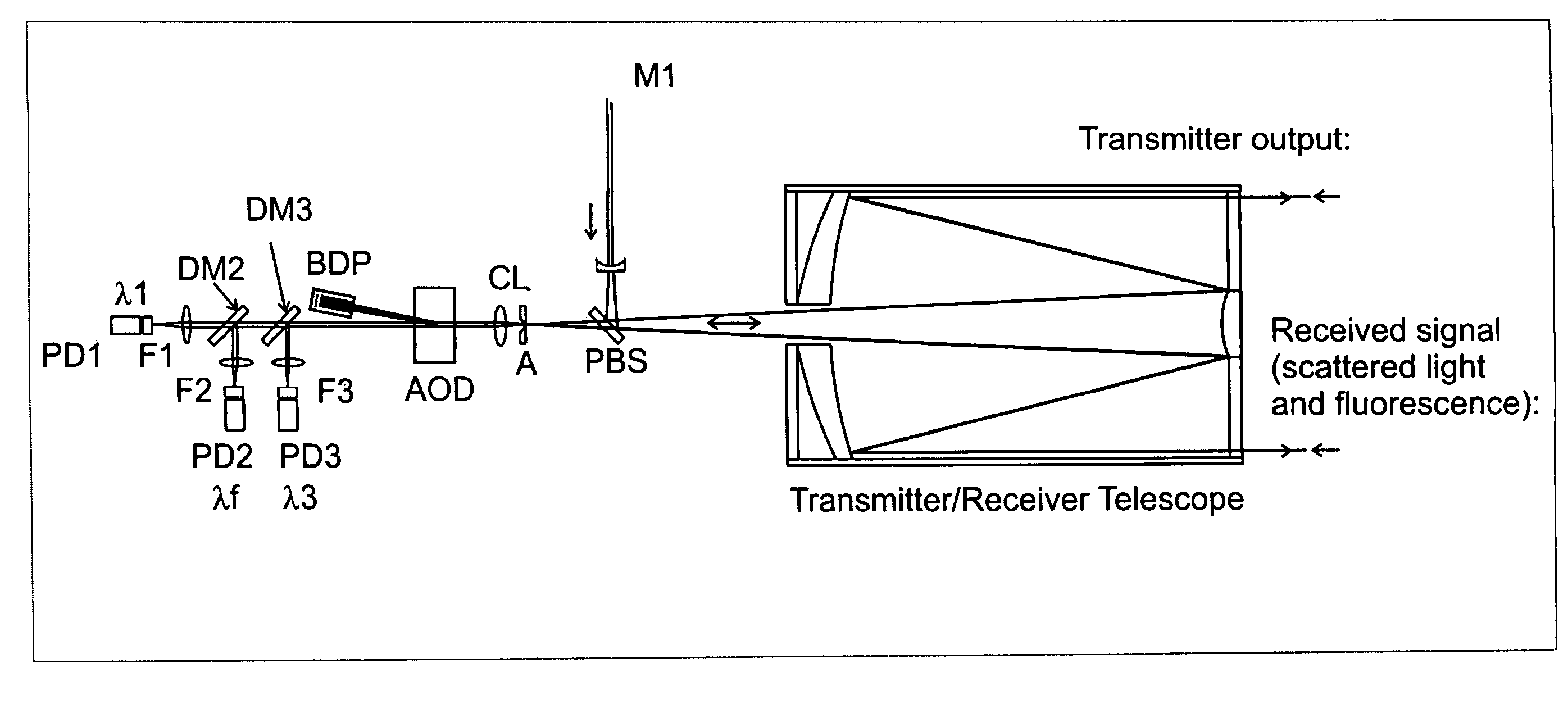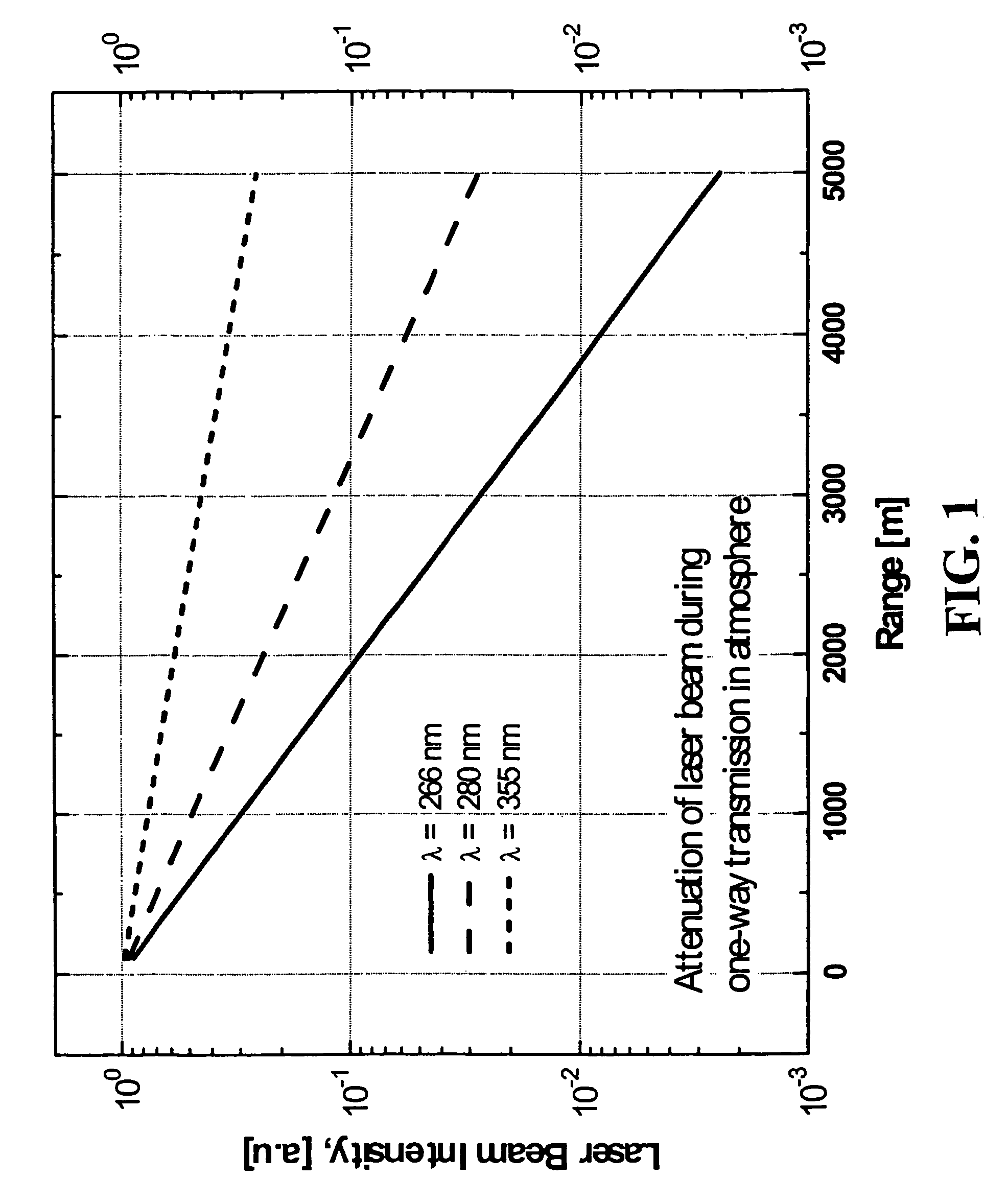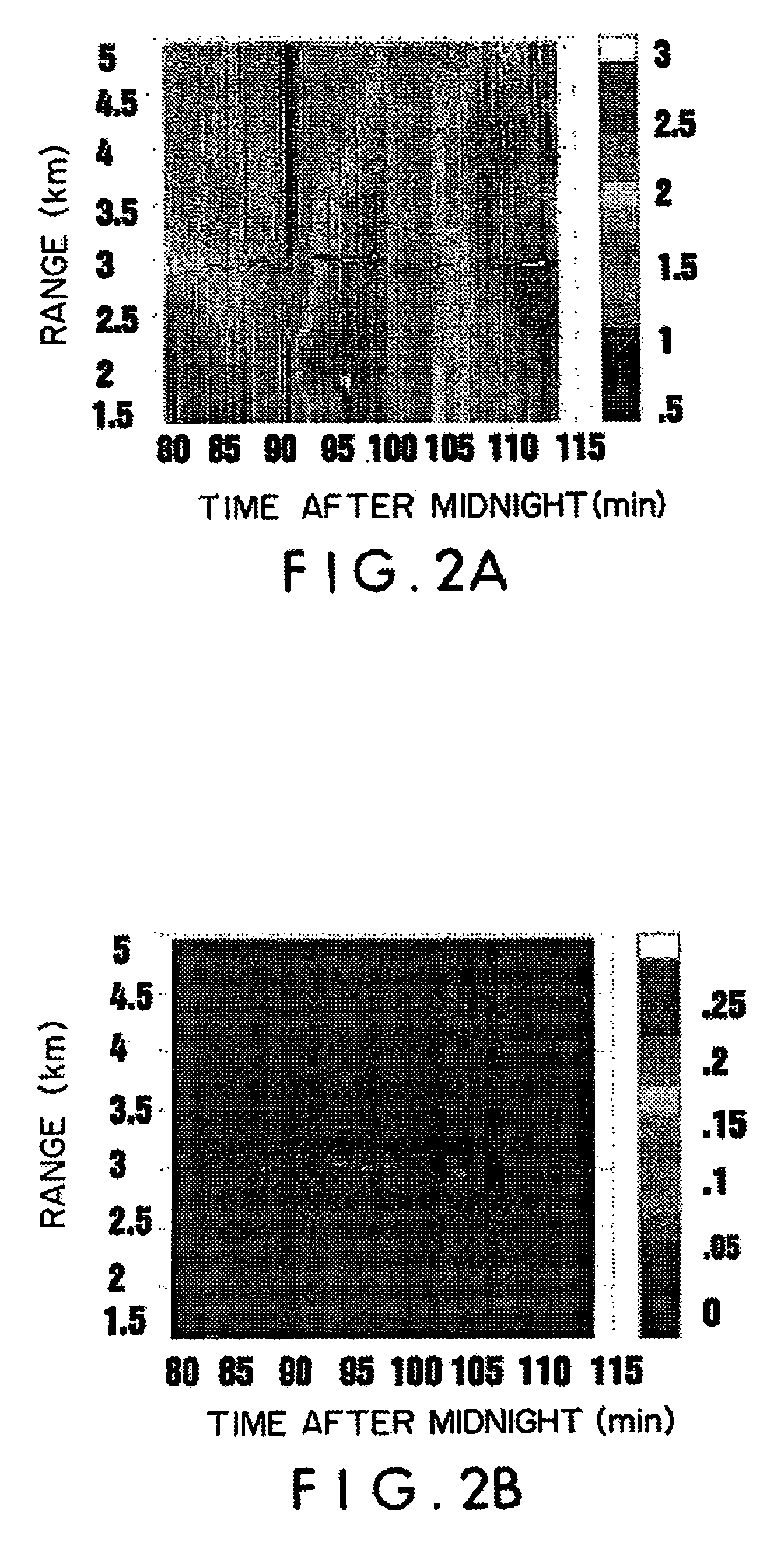Enhanced portable digital lidar system
a lidar and digital technology, applied in the field of portable digital lidar systems, can solve the problems of inconvenient maintenance, inconvenient operation, and inability to discriminate between biological weapon agent aerosols and other natural or interferent aerosol clouds, etc., and achieve the effect of convenient maintenance and convenient setup
- Summary
- Abstract
- Description
- Claims
- Application Information
AI Technical Summary
Benefits of technology
Problems solved by technology
Method used
Image
Examples
Embodiment Construction
[0032]Referring now to the drawings, wherein like reference numerals designate identical or corresponding parts throughout the several views, and more particularly to FIG. 1 thereof, FIG. 1 shows at three wavelengths (i.e., 266, 280 and 355 nm) the reduction in the laser beam intensity due to scattering and absorption by atmospheric constituents as the laser beam travels to a target. Difference in the fluorescence between excitation at 266 nm and 355 nm is more than compensated by the difference in the atmospheric transmittance shown in FIG. 1. From the lidar signal considerations shown in FIG. 1, even with a 100-fold smaller fluorescence cross section, the 355 nm lidar is an exemplary wavelength of choice for the present invention.
[0033]In fluorescence lidar, autofluorescence excited by a UV laser from biological cells is utilized to identify the fluorescing biological cells from other non-biological or naturally occurring particles. Naturally fluorescent aromatic amino acids resid...
PUM
 Login to View More
Login to View More Abstract
Description
Claims
Application Information
 Login to View More
Login to View More - R&D
- Intellectual Property
- Life Sciences
- Materials
- Tech Scout
- Unparalleled Data Quality
- Higher Quality Content
- 60% Fewer Hallucinations
Browse by: Latest US Patents, China's latest patents, Technical Efficacy Thesaurus, Application Domain, Technology Topic, Popular Technical Reports.
© 2025 PatSnap. All rights reserved.Legal|Privacy policy|Modern Slavery Act Transparency Statement|Sitemap|About US| Contact US: help@patsnap.com



